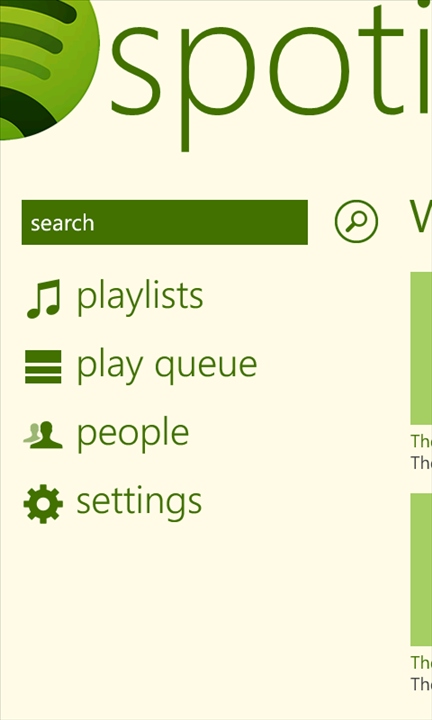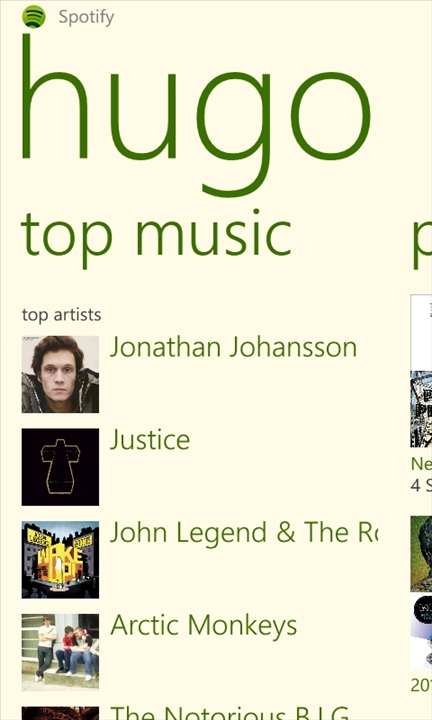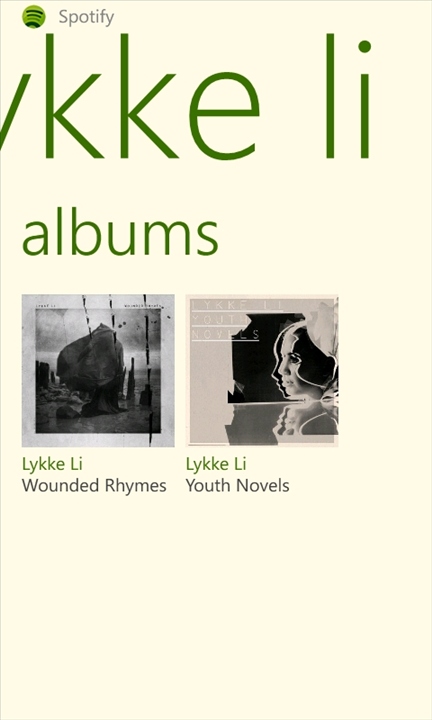Review: Spotify
Score:
81%
It really does feel like Windows Phone has rebooted itself with Mango. New devices, lots of press coverage, and an acceleration of notable names bringing their apps to the Marketplace. Spotify is one of those names. It's recognisable not just in tech circles but as a brand name that's in the public consciousness. And now the mobile client reaches Windows Phone.
Version Reviewed: 1.0.0.0
Buy Link | Download / Information Link
First up, while you can experience Spotify for free on your desktop computer, you will need a premium account to use the mobile client. That costs £9.99 a month in the UK (and a comparable amount in your local currency), which brings Spotify broadly into line with other subscription services. You do get a three day trial of the premium service when you first sign into the mobile client (or start a new account) and while it's enough to see if it works, I think Spotify might have more conversions if they had a longer trial period (and yes, I'm noting the 14 day trial of Zune Pass here).


Spotify has a simple goal, to let you listen to any piece of music on your device. Initially a streaming option on the desktop, its move into the mobile space has meant new features were needed. By their nature, mobile devices are not always in good connectivity, so the streaming option needs to be backed up by a download/offline feature .
By providing the ability to download tracks to the handset, you can not only listen to your musical choices when out and about, but it also saves battery power (and your mobile bill) by avoiding streaming over 3G. The tracks do stay protected by DRM, so there's no shifting them around phones or storing them on other devices, and when your month is up, you either go for another month or you lose access to Spotify on your mobile.
Spotify makes good use of the Metro UI, with suitably snappy panorama and pivot views. It has decided on a fixed colour, which is almost white with a tinge of green. It does look good, but it doesn't fit in with the theme choice the user has made. More than that, a light colour is going to increase battery drain on all OLED-screened phones, and the assumption has to be that you will spend a fair bit of time in this application.
My other major issue is in the Spotify search engine - there is no fuzzy searching. Pop in "The Hollies" and you can find the delights of Jennifer Eccles, but no such luck looking for "The Hollie".


The audio quality is pretty high. Downloaded tracks are specifically available at a high quality (although if you are on 3G and want to download, you can opt for a lower quality), while the streaming audio is high enough that I could hear almost no compression artefacts. This isn't a degraded audio experience, so whatever work has been done to keep the quality high has been a success.
The same care and attention needs to be applied to the Windows Phone code itself. I realise it's the first released version, but the occasional hang-up of the application when it was launched while music was playing in the background was worrying, and I did see the login screen on more than one occasion while on a 3G connection. Frustratingly, I can't spot a pattern as to when these happened. However, Spotify still feels complete, with a few niggles, rather than incomplete and struggling to work.
As you would expect, it's also integrated into the Music+Videos hub of Windows Phone, appearing under the applications tab and tracks happily appearing in the history pane for quick recall (although using this method was where I found the app hanging most of the time). What it doesn't integrate into is the music player itself. Albums downloaded inside Spotify do not show up in your Album and Artist lists, nor will they appear on the music+videos Live Tile or as wallpaper when playing. The 100% experience isn't quite there yet.
But Spotify is not an isolated standalone app on your handset, and neither is it standalone in your own world. Playlists are shared between every Spotify client tied to your account, so it's a simple matter to set up something on your desktop, pick up your phone as you head out the door, and carry on listening to the playlist.
Sharing options are also built in, and this is where Spotify has a fair bit of strength in the market. If you've been on Spotify for any length of time then you'll likely have a friends list, be sharing playlists and tracks, and of course the recent deal with Facebook meant you can publish tracks being played to your social graph.


Given that the majority of Windows Phone handsets have access to the Zune Pass, which is slightly cheaper (£8.99/month compared to Spotify's £9.99/month), the existing user base will have no qualms in carrying on their Spotify experience on their Windows Phone - and it might be enough for people to move up to the premium service. For those tied into other subscription systems, the choice is harder (but do note that, if you must, Zune Pass and Spotify live quite happily together.
Spotify needs another iteration to make it buttery smooth and look fabulous, but it works now, and I've no functional complaints. It's certainly worth considering, especially if you already use it on other platforms, but if you're new to the subscription music service, do make best use of the three day "pro" trial to see if Spotify fits you.
Personally, I think I'll stick with Zune Pass, but others (for example, James Whatley) are ready to pounce on Spotify. Options are good, and the fact that Windows Phone is a strong enough platform to offer a number of music subscription choices is a clear win.
Reviewed by Ewan Spence at
